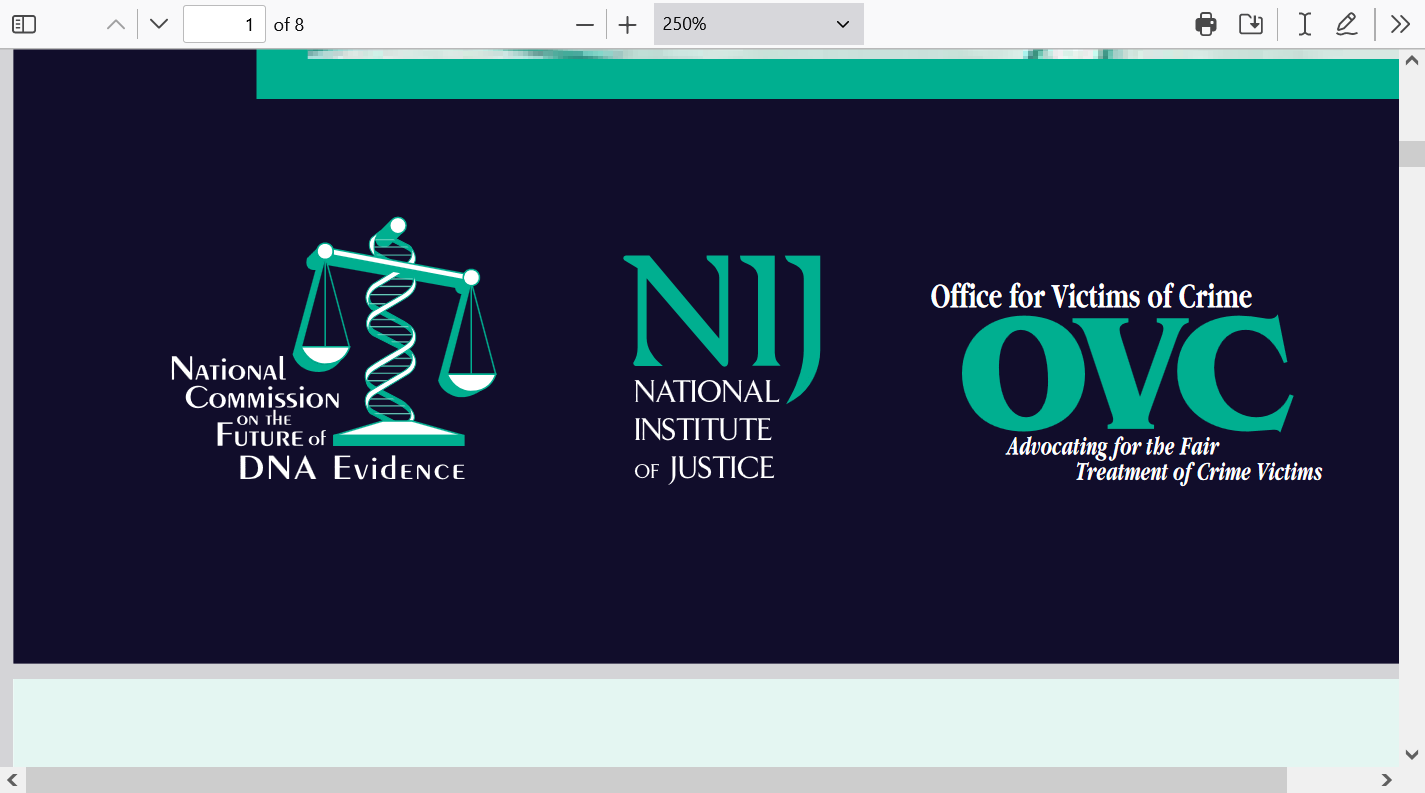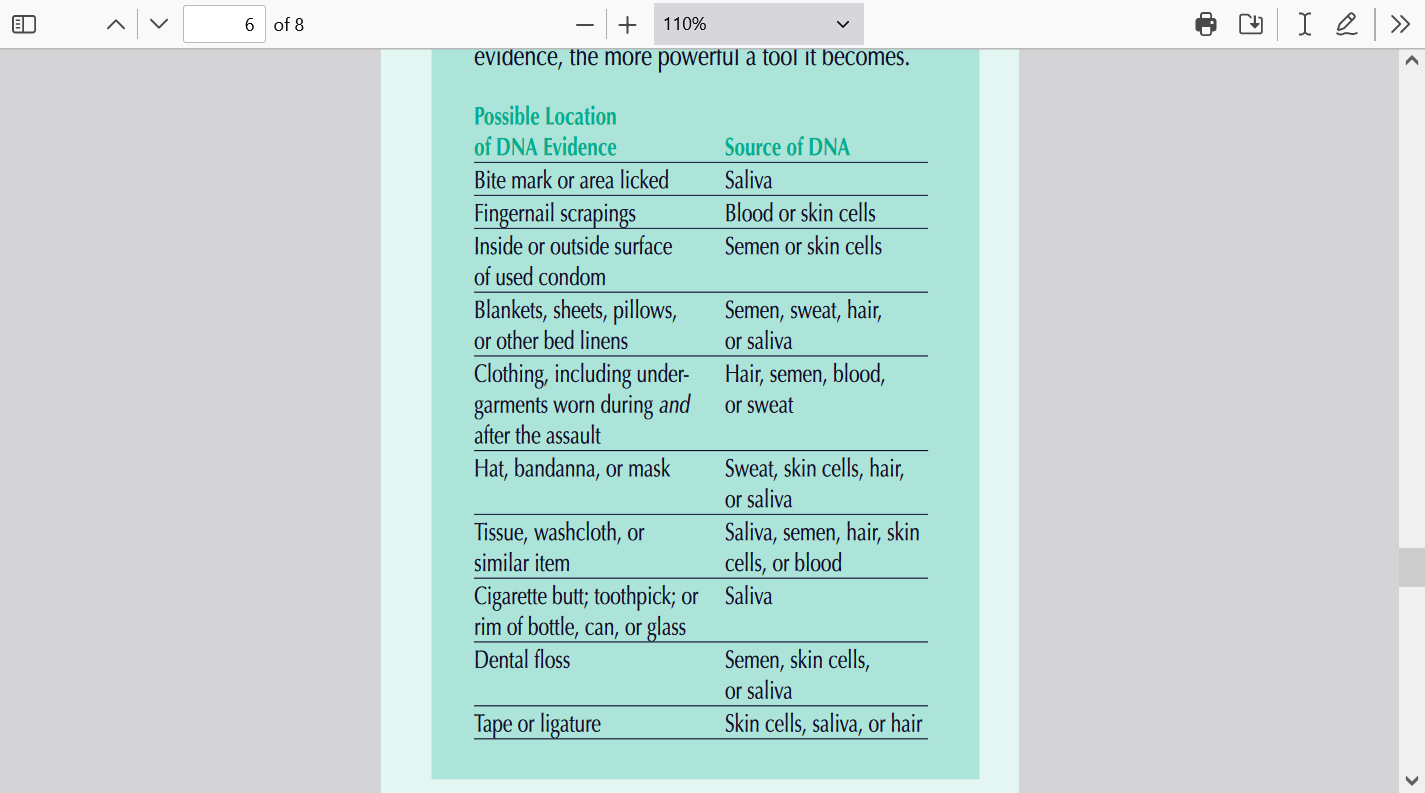
https://en.wikipedia.org/wiki/DNA_profiling
DNA profiling (also called DNA fingerprinting and genetic fingerprinting) is the process of determining an individual's deoxyribonucleic acid (DNA) characteristics. DNA analysis intended to identify a species, rather than an individual, is called DNA barcoding.
DNA profiling is a forensic technique in criminal investigations, comparing criminal suspects' profiles to DNA evidence so as to assess the likelihood of their involvement in the crime.[1][2] It is also used in paternity testing,[3] to establish immigration eligibility,[4] and in genealogical and medical research. DNA profiling has also been used in the study of animal and plant populations in the fields of zoology, botany, and agriculture.[5]

https://www.ojp.gov/pdffiles1/nij/bc000657.pdf

INNOCENCE PROJECT
https://innocenceproject.org/dna-exonerations-in-the-united-states/
Forensic DNA evidence has been a game-changer for law enforcement, but research shows it can contribute to miscarriages of justice
https://daily.jstor.org/forensic-dna-evidence-can-lead-wrongful-convictions/
https://futurism.com/bad-dna-tests-innocent-people-convicted
https://www.geneticsandsociety.org/article/dna-evidence-can-be-fabricated-scientists-show
The concept of obtaining identifying information from tiny bits of touch-transfer DNA was first discovered by an Australian scientist and published in 1997 under the title "DNA fingerprints from fingerprints." The scientist discovered that tiny bits of DNA would transfer through touch, together with fingerprint markings, allowing for the collection and analysis of DNA from fingerprints left behind by culprits. Practical utility in the criminal justice world required the emergence of more sensitive technologies to detect the infinitesimal bits of evidence. Such equipment began appearing in forensic laboratories over the last 15 years. But law enforcement did not limit their search for touch-transfer DNA to just fingerprints; instead, they expanded the search for touch-transfer DNA to all objects and surfaces, irrespective of the ability to find other identifying evidence connected to that DNA, such as a fingerprint. This led to the prosecution of individuals based on DNA from low-template and low-quality samples not connected to other identifying data. Moreover, prosecutors failed to distinguish the unique nature of touch-transfer DNA and the likelihood of random and innocent touch-transfer origins, presenting it to juries as the equivalent of a smoking gun. Albeit, the Australian scientist who presented the concept of touch-transfer DNA, also noted that some people's DNA curiously appeared on things that they had never touched.
The occurrence of secondary DNA transfer has been previously established. However, the transfer of DNA through an intermediary has not been revisited with more sensitive current technologies implemented to increase the likelihood of obtaining results from low-template/low-quality samples. This study evaluated whether this increased sensitivity could lead to the detection of interpretable secondary DNA transfer profiles. After two minutes of hand to hand contact, participants immediately handled assigned knives. Swabbings of the knives with detectable amounts of DNA were amplified with the Identifiler(®) Plus Amplification Kit and injected on a 3130xl. DNA typing results indicated that secondary DNA transfer was detected in 85% of the samples. In five samples, the secondary contributor was either the only contributor or the major contributor identified despite never coming into direct contact with the knife. This study demonstrates the risk of assuming that DNA recovered from an object resulted from direct contact.